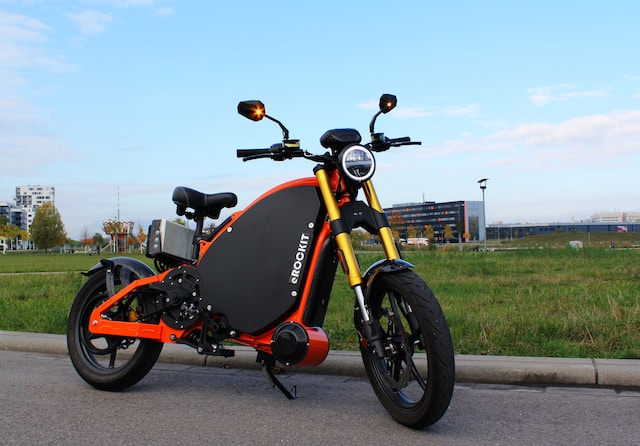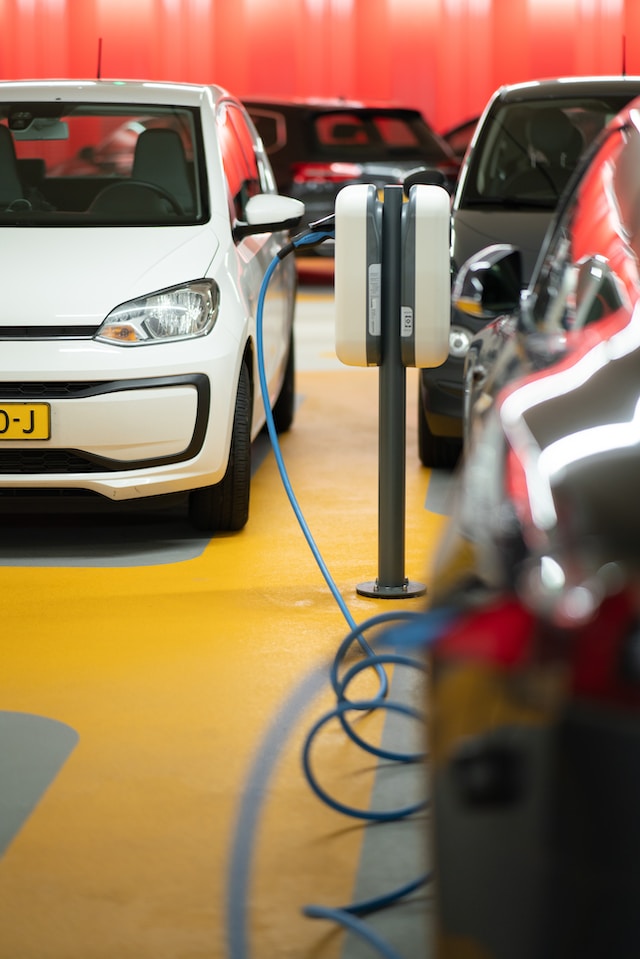
As the world becomes increasingly aware of the environmental impact of traditional gasoline-powered vehicles, hybrid vehicles have become more popular. With a mix of gasoline and electric power sources, hybrid vehicles offer a unique solution to the needs of the modern driver. Hybrids are also easier to make than full battery electric vehicles.
Although hybrid vehicles have been around for several decades, they have only recently gained mass appeal. The Prius, introduced by Toyota in the late 1990s, was the first hybrid vehicle to gain significant popularity. Since then, nearly all major automakers have introduced their own hybrid models.
Types of Hybrid Vehicles
Hybrid vehicles come in various configurations, each designed to maximize fuel efficiency and reduce emissions. Understanding the different types of hybrid vehicles is essential to make an informed choice when considering a hybrid for your transportation needs.
Parallel Hybrids
Parallel hybrids, also known as power-split hybrids, are one of the most common types of hybrid vehicles. They combine an internal combustion engine (ICE) and an electric motor to provide power to the wheels simultaneously.
In parallel hybrids, both the gasoline engine and the electric motor can work together to provide propulsion, delivering a balance of power and fuel efficiency. Automakers like Toyota employ a power-split device, often called a planetary gearset, to blend the power sources seamlessly. Parallel hybrids use regenerative braking to capture energy during deceleration, which is then stored in the battery for future use.
Series Hybrids
Series hybrids, also known as range extenders, have a unique configuration where the electric motor is the primary source of power, while the internal combustion engine functions as a generator to recharge the battery. Series hybrids can operate solely on electric power for a certain range before the internal combustion engine kicks in to recharge the battery.
Series hybrids excel in city driving or when constant speeds are maintained, allowing the electric motor to function optimally. With fewer moving parts in the electric motor, series hybrids often require less maintenance than traditional vehicles.
Plug-in Hybrids (PHEVs)
Plug-in hybrids are a hybrid variant that allows for recharging the battery through an external power source, such as a standard electrical outlet or a charging station. PHEVs offer a more extended all-electric range compared to traditional hybrids, allowing drivers to commute without using gasoline.
These hybrids feature a charge port that enables them to be plugged in and charged from the electrical grid, reducing the reliance on gasoline. Similar to other hybrid types, PHEVs make use of regenerative braking to recapture energy during deceleration.

Mild Hybrids
Mild hybrids, also known as micro hybrids, utilize a smaller electric motor and a lower-voltage battery compared to full hybrids. Mild hybrids primarily use their electric motor to provide a power boost to the internal combustion engine, reducing fuel consumption.
They are known for their start-stop technology, which shuts off the engine when the vehicle is stationary, such as at traffic lights. Like other hybrid vehicles, mild hybrids utilize regenerative braking to recover energy during braking events.
How Hybrid Vehicles Work
Understanding the mechanics of how hybrid vehicles operate is essential to appreciate the technology that allows them to achieve higher fuel efficiency and reduce emissions.
Combining Electric and Internal Combustion Engines
Hybrid vehicles operate through the integration of both an electric motor and an internal combustion engine, each serving a specific purpose in the overall propulsion system.
- Electric Motor: The electric motor is a crucial component of hybrid vehicles. It operates using electricity stored in a battery and can provide power independently or in conjunction with the internal combustion engine.
- Internal Combustion Engine (ICE): Hybrid vehicles are equipped with a gasoline or diesel engine, similar to those found in conventional vehicles. The ICE provides power when needed and assists in charging the battery.
- Power Management: A central computer, often called a powertrain control module, manages the distribution of power between the electric motor and the internal combustion engine based on driving conditions, demand for power, and energy efficiency.
Regenerative Braking
Regenerative braking is a unique feature of hybrid vehicles that contributes to their improved fuel efficiency. During deceleration and braking, the electric motor operates in reverse, functioning as a generator. This process converts kinetic energy into electrical energy, which is then directed back into the vehicle’s battery for storage and later use.
Regenerative braking minimizes energy waste and reduces wear on brake components, extending their lifespan. It is a key factor in enhancing fuel efficiency and reducing emissions.
Electric-Only Operation
Many hybrid vehicles are designed to operate in electric-only mode under certain conditions. Hybrid vehicles can run solely on electric power at low speeds, typically during city driving or stop-and-go traffic. When gentle acceleration is required, the electric motor can power the vehicle without engaging the internal combustion engine. Electric-only operation enhances fuel efficiency and minimizes emissions, making it an environmentally friendly choice for urban commuting.
Power Split and Transmission
Hybrid vehicles use advanced transmission systems that enable power to be split between the electric motor and the internal combustion engine.

This component, often referred to as a planetary gearset, allows for seamless blending of power sources. It manages the distribution of power, ensuring that the vehicle operates efficiently in various driving conditions. The transmission system ensures that power is transmitted to the wheels, whether from the electric motor, the internal combustion engine, or both, based on the demands of the driver and the vehicle’s efficiency goals.
Environmental and Fuel Efficiency Benefits
Hybrid vehicles offer a range of environmental and fuel efficiency benefits that make them an appealing choice for eco-conscious consumers and those seeking to reduce their carbon footprint.
Reduced Greenhouse Gas Emissions
Hybrid vehicles significantly contribute to lowering greenhouse gas emissions, which is crucial for mitigating climate change. Hybrid vehicles, especially during electric-only operation, produce zero tailpipe emissions. This means they don’t emit carbon dioxide (CO2), nitrogen oxides (NOx), or other harmful pollutants directly into the atmosphere.
Advanced power-split systems, like Toyota’s Hybrid Synergy Drive, allow for seamless transitions between the electric motor and the internal combustion engine, optimizing fuel efficiency and reducing emissions. The reduced reliance on the internal combustion engine results in a lower carbon footprint compared to traditional vehicles.
Improved Fuel Economy
One of the most noticeable advantages of hybrid vehicles is their improved fuel economy. Hybrid vehicles achieve better fuel economy compared to conventional vehicles, primarily due to the electric motor’s ability to assist in propelling the vehicle. Hybrids excel in city driving conditions where frequent stops and starts occur. The electric motor can take over at lower speeds, saving fuel. Increased fuel efficiency in hybrid vehicles not only reduces carbon emissions but also lowers the emission of other pollutants, improving air quality in urban areas.
Air Quality Improvements
Hybrid vehicles play a crucial role in enhancing air quality, particularly in urban environments. The lower emissions of NOx, particulate matter (PM), and volatile organic compounds (VOCs) contribute to reduced smog and better air quality in cities where traffic congestion is a common issue.

Hybrid vehicles operate more quietly than their internal combustion engine counterparts, decreasing noise pollution in urban environments. Improved air quality as a result of reduced emissions leads to fewer cases of respiratory diseases and other health issues related to air pollution.
Regenerative Braking and Energy Recovery
Hybrid vehicles employ regenerative braking technology, which enhances fuel efficiency and reduces energy waste. During braking and deceleration, the electric motor runs in reverse, acting as a generator to convert kinetic energy into electrical energy. This energy is stored in the vehicle’s battery for later use. Regenerative braking ensures that energy is not lost as heat during braking, improving the overall energy efficiency of the vehicle.
Challenges of Hybrid Vehicles
Hybrid vehicles have gained significant attention in recent years due to their potential to address environmental concerns and reduce dependency on fossil fuels. These innovative automobiles combine the benefits of both traditional internal combustion engines and electric propulsion systems. However, they do not come without challenges.
1. Higher Upfront Cost
One of the main challenges of hybrid vehicles is their higher initial purchase price compared to conventional vehicles. The advanced technology used in hybrid systems, including electric motors and batteries, increases manufacturing costs. While the long-term savings in fuel costs can offset this expense, it remains a barrier for some potential buyers.
2. Limited Electric-Only Range
Hybrid vehicles have a limited electric-only range, which means they rely on the gasoline engine for longer journeys. This limitation can be a drawback for drivers who want to minimize their use of fossil fuels and rely solely on electric power.

3. Battery Degradation
The batteries in hybrid vehicles can degrade over time, affecting their overall performance and efficiency. Battery replacement can be costly and is a concern for some owners, although advancements in battery technology are addressing this issue.
4. Charging Infrastructure
Hybrid vehicles still require a charging infrastructure for their electric components. While this is less demanding than full electric vehicles, it can be a challenge for those who don’t have access to charging facilities at home or work.
5. Complex Maintenance
Hybrid vehicles require specialized maintenance, and not all automotive repair shops are equipped to service them. This can result in higher maintenance costs and inconvenience for owners.
Hybrid vehicles offer numerous advantages, including improved fuel efficiency, reduced emissions, and potential financial incentives. However, they also come with their fair share of challenges, such as higher upfront costs and the need for a charging infrastructure. As technology continues to advance, many of these challenges are being addressed, making hybrid vehicles an increasingly attractive and practical choice for environmentally conscious consumers.


